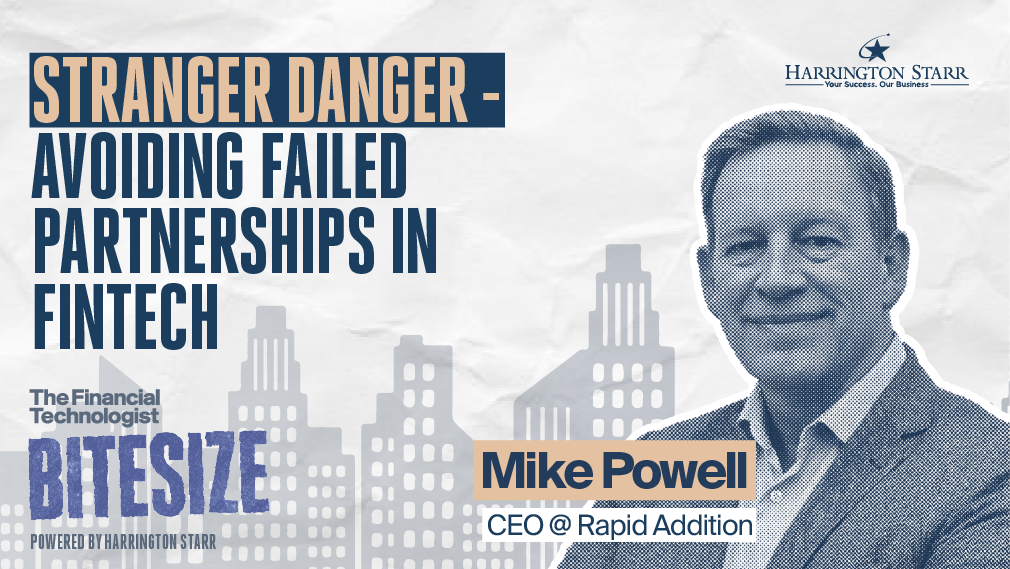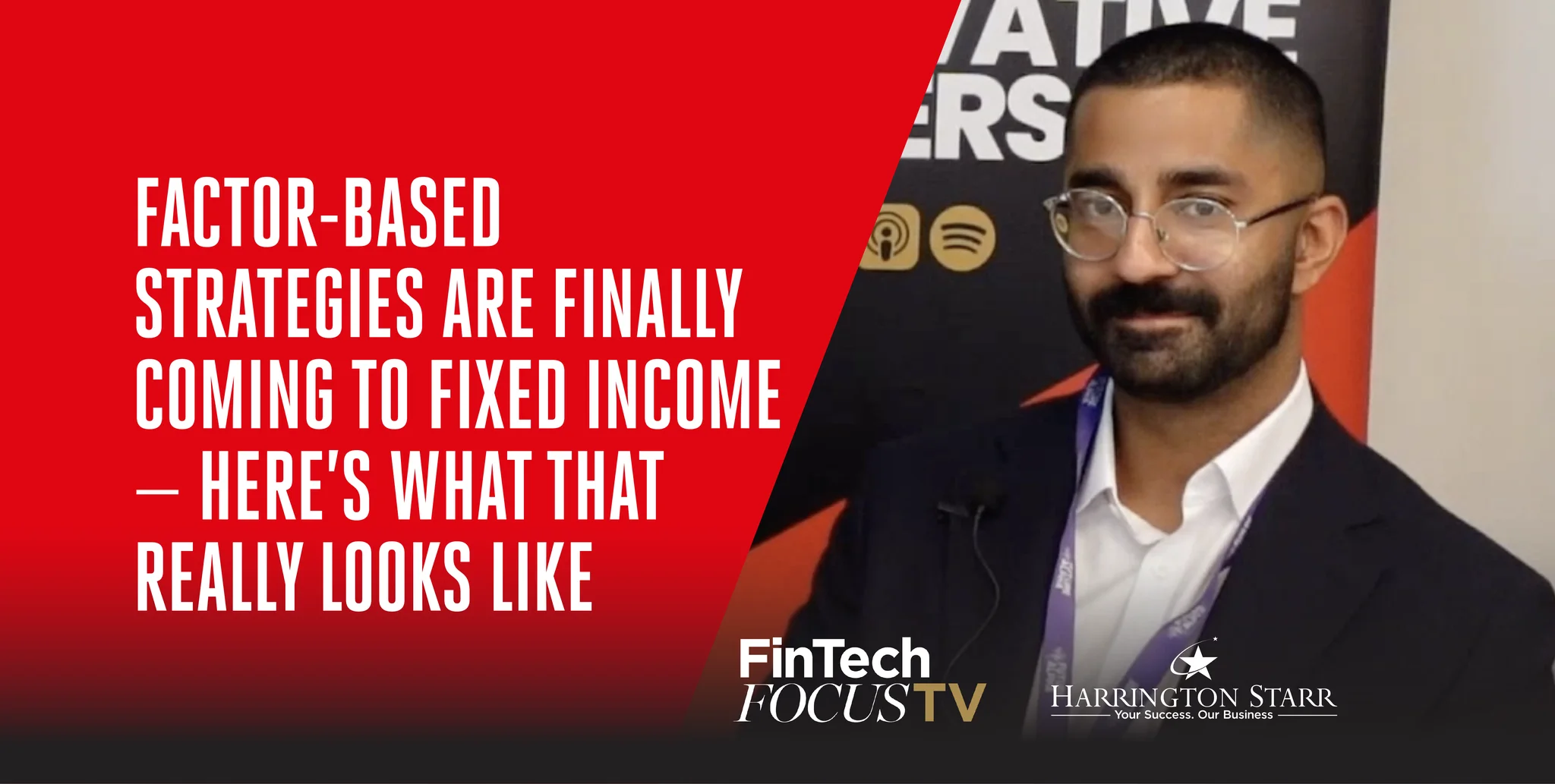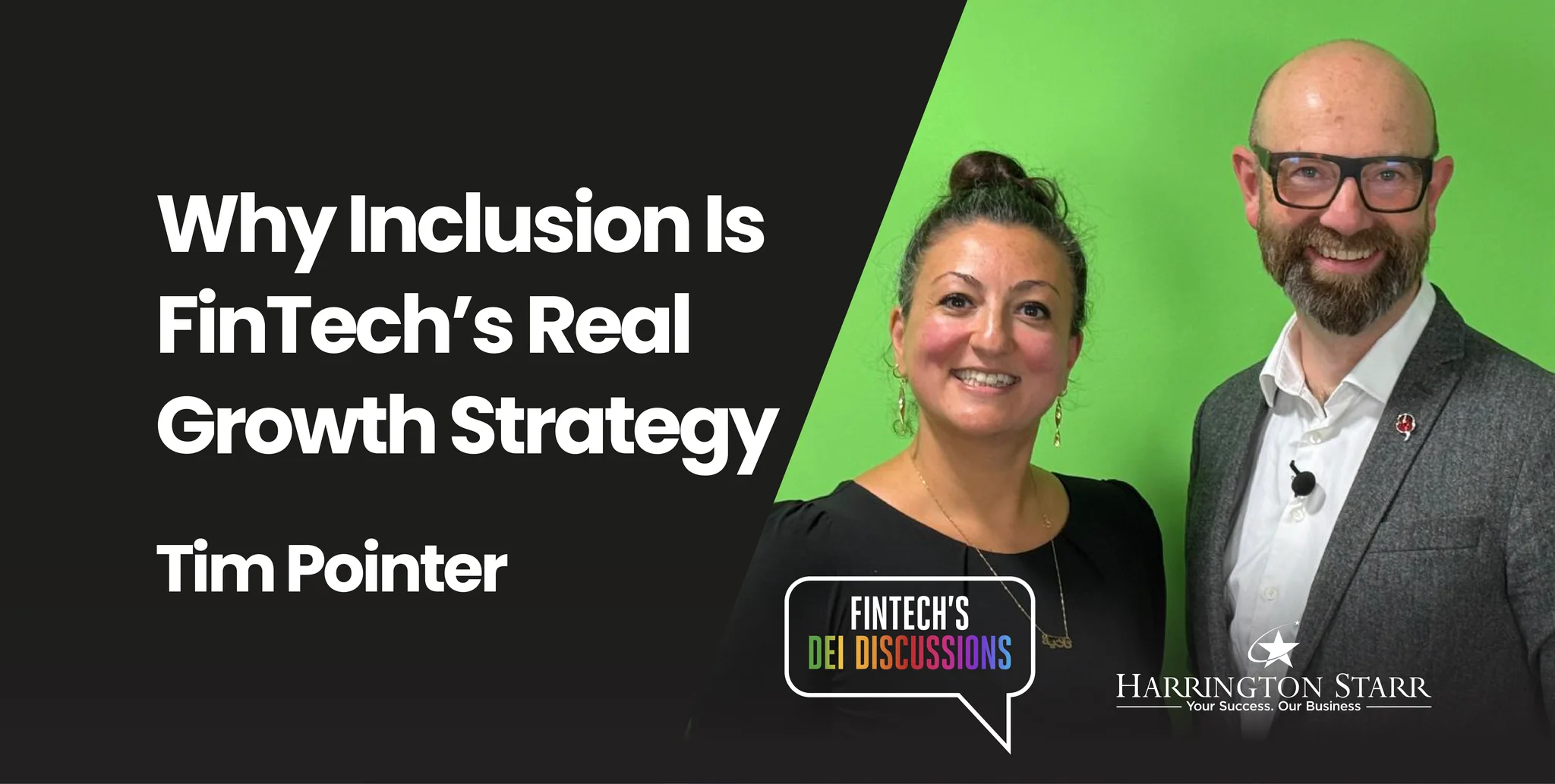An effective partnership strategy should be a key component of any FinTech’s go-to-market plans. Indeed, given the complexity of the capital markets ecosystem, it’s hard to see how firms can succeed without one. But not all partnerships are good ones let alone effective ones.
So how do you give yourself the best chance of success when building commercial partnerships? Partnering is often seen as a quick fix to business challenges (product gaps, new customer access, etc.) but this is not the case. Successful partnerships are not straightforward. I’ve seen my fair share of good and bad during my career – below are my thoughts on why the good ones succeeded.
Starting with ‘why’ you are partnering sounds obvious, but you’d be surprised. Some companies operate large partnership teams where quantity seems more important than quality, often encouraged by poorly thought-through compensation schemes. I’m always shocked at this approach, which feels like throwing mud against a wall and hoping some of it sticks.
Partnering involves significant effort, burns resources and carries high opportunity costs. Your choice of partner should be an output of business strategy, a highly selective process of identifying the right partner to achieve your business goals.
Having identified a willing partner is when the real work begins. You might understand your objectives, but do you understand theirs? Not just short-term goals, but their broader strategy and how partnering with you fits within it. Is their management team fully behind the initiative? Will it be properly resourced? Will their sales team be given quotas (if relevant), and so on? Agreeing on genuinely shared objectives and strategic alignment is paramount to long-term successful partnerships.
Another major source of failed collaboration projects is unrealistic expectations of what each party brings to the table. For instance, smaller FinTechs often partner with larger organisations hoping to leverage their sales force to access new customers. But sales teams often struggle with their own product portfolios, and it can be unrealistic to think they’ll proactively sell yours. That’s not to say there aren’t other tangible commercial benefits such as brand association, marketing resources, or leveraging existing client contracts to avoid lengthy vendor onboarding. For partnerships to work, parties must be honest about what they will contribute.
Perhaps most important is whether the partners care about each other’s success. Do you both have a genuine win/win attitude or is the partnership just a means to an end? I have seen many failed partnerships where one party sees itself as the ‘senior partner’, having better technology, ‘owning’ the clients, and so on, which leads to a negative mindset. These will be the same partners who throw you under the bus the minute something goes wrong with a customer. Conversely, a ‘you succeed, we succeed’ approach is far more likely to achieve a positive outcome and give customers the confidence to adopt your joint proposition.
There will be other important tasks such as agreeing on go-to-market plans, pricing strategy, commercial terms, technology integration, support-model alignment, communication channels, and more. You will need to assign ownership and senior-level sponsorship to ensure your wider organisation is bought into making the partnership work. But those are second-level details; the fundamental principles of building strategic partnerships come down to the clarity and alignment I discussed above, together with a sincere mutual desire for both partners to succeed.
Mike is the CEO of Rapid Addition (www.rapidaddition.com) a provider of high-performance enterprise trading technology to capital markets firms around the globe. With over 30 years of capital markets experience in financial data and technology, Mike has implemented many successful partnerships, including Rapid Addition’s current collaborations with Overbond, Velox, ipushpull, and Chainlink.







